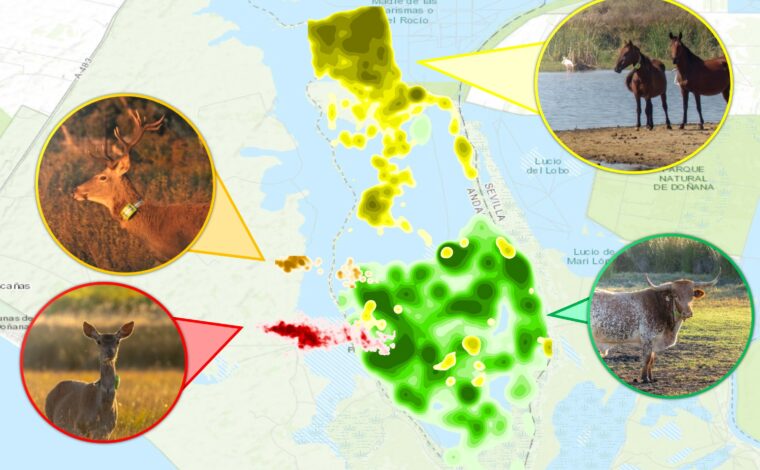
(See English version below)
El pasado 30 de setiembre, el equipo del Grupo de Ecología Espacial estuvo presente en la Noche Europea de los Investigadores celebrada en Sevilla, desarrollando la actividad Los herbívoros se mueven, pero sus recursos no: ¿Podemos proteger la vegetación de Doñana ante el cambio climático?
Esta actividad, basada en el trabajo que desarrollamos actualmente dentro del proyecto SUMHAL-WP3 y en los resultados de otros proyectos previos (como el proyecto GRAZE), buscaba familiarizar a los participantes con los ungulados del Parque Nacional de Doñana; presentaba varios ejemplos practicos de las metodologías que usamos para investigar su comportamiento trófico, uso del espacio e interacciones con la vegetación; y mostraba algunos ejemplos de las actuaciones de gestión realizadas para reducir el impacto que genera la sobreherbivoría en este espacio protegido.
--
Last September 30th, a team of the Spatial Ecology Group was present during the European Researcherers' Night in Sevilla. The presented the activity Herbivores move, but their food resources don't: Will we be able to protect Doñana's vegetation against climate change?
The activity was based on the corrent research undertook by the SUMHAL-WP3 project, as well as in the results of previous research project such as GRAZE. It aimed at familiarizing participants with Doñana's ungulates; presenting the methodologies used to investigate their trophic behaviour, space use and their interactions with the vegetation; and showed several examples of the management measures used to reduce their impact on the vegetation of this iconic protected area.

